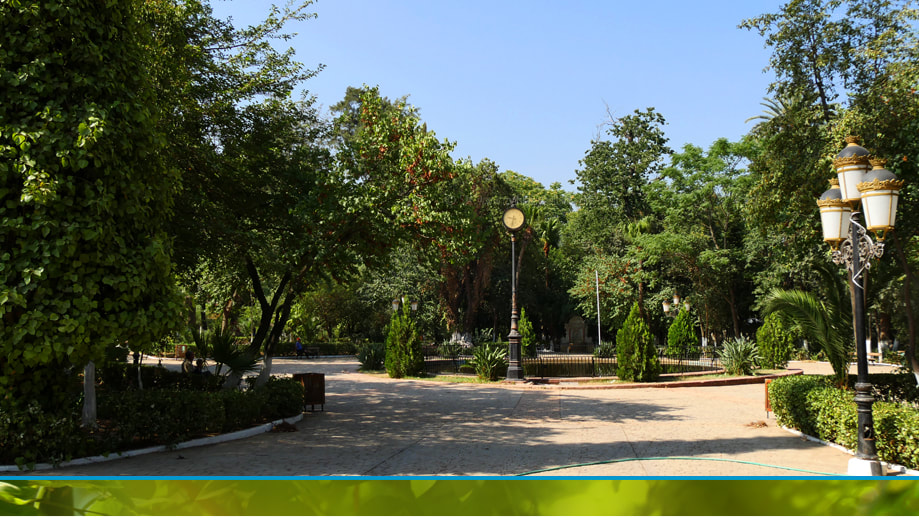Located near Place Ettoute in Blida, Algeria, the historic Jardin Bizot, now known as the Patrice-Lumumba Garden, is one of the city’s most cherished green spaces. Covering around 12,000 m² along the banks of Oued Sidi el Kebir and close to Lycée Ibn Rochd, this garden has been a focal point of local history, community life, and cultural heritage for more than 150 years.
Origins and Historical Context
The Creation of Jardin Bizot (1867)
The garden was established in 1867 by the Blida Municipality under Mayor Borély La Sapie. It was built on a plot previously owned by the military, part of a French colonial program to encourage major Algerian cities to plant diverse species, conduct agricultural experiments, and serve as model public gardens — similar to Algiers’ botanical garden.
Initially named after Colonel Michell Bizot, the garden was renamed Patrice Lumumba Garden in 1968, honoring the Congolese independence leader.
Ownership and Legal Disputes
1890 — Military Land Sales
A law passed in 1890 allowed the army to sell off military lands that were no longer in use. This included Jardin Bizot, which had been leased to the city for a symbolic 5 francs per year.
1900–1901 — Political Turmoil
After disputed municipal elections in 1900, political tensions rose. The local newspaper Le Tell, owned by former mayor Mauguin, began criticizing the new administration, especially for its handling of the garden’s ownership.
Press Coverage and Public Sentiment
1902 — Newspaper Campaign to Save the Garden
Articles from Le Tell revealed:
- The army demanded 38,000 francs for the garden, which had been improved and maintained by the municipality for decades.
- Threats were made to auction the property and sell it in buildable lots if the city didn’t purchase it.
- The public considered the garden a local treasure worth preserving.
A charity fair held in the garden was described as a “final celebration” before possible closure. The military, needing funds for new barracks in southern Algeria, offered to sell it directly to the city for 38,700 francs. Despite having funds months earlier, the municipality claimed it was broke, prompting public outrage.
Jardin Bizot in the 20th Century

Community Life
Throughout the early and mid-20th century, the garden was a vibrant hub for:
- Children’s donkey rides (approved in 1939 at 1 franc per ride)
- Festivals and music contests
- Boules tournaments and public dances
- Fireworks displays near Fort Mimich
The garden’s features included:
- A central pond once home to colorful fish and ducks
- Century-old trees providing shade
- Fragrant flower beds along winding paths
Decline of Public Events
Vandalism during public festivals led the mayor to ban such gatherings. Plans to convert the pond into a swimming pool were interrupted by World War II. The garden, however, retained its peaceful charm for daily visitors.
Present-Day Patrice-Lumumba Garden
Today, the former Jardin Bizot — officially the Patrice-Lumumba Garden —, with occasional openings for evening concerts., Blida residents fondly remember its key features:

- Marble fountain installed in 1928, donated by engineer Mr. Sauvaget
- Ancient trees and landscaped flower beds
- Pond fed by the river, once alive with goldfish and ducks
The garden remains a beloved symbol of Blida’s urban heritage.
Cultural Significance
Jardin Bizot’s story reflects more than just municipal history — it mirrors Blida’s identity as a city where nature, community, and politics intersect. From colonial-era creation, through political disputes, to its role as a social hub, it stands as a living archive of the Mitidja plain’s cultural heritage.